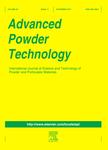版权所有:内蒙古大学图书馆 技术提供:维普资讯• 智图
内蒙古自治区呼和浩特市赛罕区大学西街235号 邮编: 010021

作者机构:Univ Melbourne Australian Mineral Sci Res Inst Chem & Biomol Eng Melbourne Vic 3010 Australia Alberta Res Council Edmonton AB Canada
出 版 物:《ADVANCED POWDER TECHNOLOGY》 (先进粉末技术)
年 卷 期:2009年第20卷第3期
页 面:273-279页
核心收录:
学科分类:0817[工学-化学工程与技术] 08[工学]
基 金:Australian Mineral Science Research Institute, (LP0667828) Billiton Australian Research Council, ARC BHP
主 题:Flocculation Flotation Inter-particle forces Mineral processing Responsive polymers
摘 要:A processing scheme which uses a single chemical that has multiple functions to achieve both efficient mineral flotation and solids dewatering is presented. Temperature sensitive polymers which display hydrophilic/hydrophobic transitions in response to changes in temperature such as poly (N-isopropyl acrylamide) (PNIPAM) have been found to be useful as such multiple function reagents. This polymer can cause the mineral particles surfaces to be hydrophilic at temperature below the critical solution temperature (CST = 32 degrees C) and hydrophobic at temperature above the CST. Therefore, both particle surface wettability and inter-particle interaction forces are reversibly controllable. When the surface is hydrophilic, particle dispersion is achieved by repulsive inter-particle forces whereas when the surface is hydrophobic, particle aggregation is induced by inter-particle hydrophobic attractive forces. In addition, the hydrophobic surface condition allows for the attachment of particles to bubbles. Flotation and solid settling tests have been conducted With silica and kaolinite suspensions treated with (PNIPAM). Both effective suspension dispersion or hydrophobic aggregation and flotation without any additional collector have been demonstrated. In solid/liquid separation, rapid settling was obtained with hydrophobic aggregation at temperature above the CST and further sediment consolidation (and water release) occurred at temperature below the CST. The approach has the potential to reduce the amount and types of reagents required for mineral processing. (C) 2009 The Society of Powder Technology Japan. Published by Elsevier BV and The Society of Powder Technology Japan. All rights reserved.